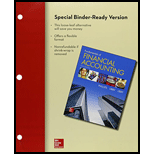
Loose-leaf for Fundamentals of Financial Accounting with Connect
5th Edition
ISBN: 9781259619007
Author: Fred Phillips Associate Professor
Publisher: McGraw-Hill Education
expand_more
expand_more
format_list_bulleted
Textbook Question
Chapter 13, Problem 13.5PA
Interpreting Profitability, Liquidity, Solvency, and P/E Ratios
Coke and Pepsi are well-known international brands. Coca-Cola sells more than $46 billion worth of beverages each year while annual sales of Pepsi products exceed $66 billion. Compare the two companies as a potential investment based on the following ratios:
| Ratio | Coca-Cola | PepsiCo | |
| Gross profit percentage | 60.7% | 53.2% | |
| Net profit margin | 18.4% | 10.2% | |
| EPS | $1.90 | $4.32 | |
| Inventory turnover ratio | 5.3 | 8.2 | |
| 1.13 | 1.24 | ||
| Debt-to-assets | 0.41 | 0.38 | |
| P/E ratio | 20.4 | 19.3 | |
Required:
- 1. Which company appears more profitable? Describe the ratio(s) that you used to reach this decision.
- 2. Which company appears more liquid? Describe the ratio(s) that you used to reach this decision.
- 3. Which company appears more solvent? Describe the ratio(s) that you used to reach this decision.
- 4. Are the conclusions from your analyses in requirements 1–3 consistent with the value of the two companies, as suggested by their P/E ratios? If not, offer one explanation for any apparent inconsistency.
Expert Solution & Answer
Want to see the full answer?
Check out a sample textbook solution
Students have asked these similar questions
General accounting question
provide correct answer
Hi expert please give me answer general accounting question
Chapter 13 Solutions
Loose-leaf for Fundamentals of Financial Accounting with Connect
Ch. 13 - What is the general goal of trend analysis?Ch. 13 - Prob. 2QCh. 13 - What is ratio analysis? Why is it useful?Ch. 13 - What benchmarks are commonly used for interpreting...Ch. 13 - Prob. 5QCh. 13 - Prob. 6QCh. 13 - Slow Cellars current ratio increased from 1.2 to...Ch. 13 - From last year to this year, Colossal Companys...Ch. 13 - From last year to this year, Berry Bam reported...Ch. 13 - Explain whether the following situations, taken...
Ch. 13 - What are the two essential characteristics of...Ch. 13 - Prob. 12QCh. 13 - Prob. 13QCh. 13 - Prob. 14QCh. 13 - Prob. 15QCh. 13 - Prob. 16QCh. 13 - 1. Which of the following ratios is not used to...Ch. 13 - Prob. 2MCCh. 13 - Prob. 3MCCh. 13 - Analysts use ratios to a. Compare different...Ch. 13 - Which of the following ratios incorporates stock...Ch. 13 - Prob. 6MCCh. 13 - Prob. 7MCCh. 13 - A bank is least likely to use which of the...Ch. 13 - Prob. 9MCCh. 13 - (Supplement 13A) Which of the following items is...Ch. 13 - Calculations for Horizontal Analyses Using the...Ch. 13 - Calculations for Vertical Analyses Refer to M13-1....Ch. 13 - Interpreting Horizontal Analyses Refer to the...Ch. 13 - Interpreting Vertical Analyses Refer to the...Ch. 13 - Prob. 13.5MECh. 13 - Prob. 13.6MECh. 13 - Prob. 13.7MECh. 13 - Analyzing the Inventory Turnover Ratio A...Ch. 13 - Inferring Financial Information Using the Current...Ch. 13 - Prob. 13.10MECh. 13 - Identifying Relevant Ratios Identify the ratio...Ch. 13 - Prob. 13.12MECh. 13 - Analyzing the Impact of Accounting Alternatives...Ch. 13 - Describing the Effect of Accounting Decisions on...Ch. 13 - Prob. 13.1ECh. 13 - Prob. 13.2ECh. 13 - Prob. 13.3ECh. 13 - Computing Profitability Ratios Use the information...Ch. 13 - Prob. 13.5ECh. 13 - Matching Each Ratio with Its Computational Formula...Ch. 13 - Computing and Interpreting Selected Liquidity...Ch. 13 - Prob. 13.8ECh. 13 - Prob. 13.9ECh. 13 - Prob. 13.10ECh. 13 - Prob. 13.11ECh. 13 - Prob. 13.12ECh. 13 - Prob. 13.13ECh. 13 - Prob. 13.14ECh. 13 - Analyzing the Impact of Alternative Inventory...Ch. 13 - Prob. 13.1CPCh. 13 - Analyzing Comparative Financial Statements Using...Ch. 13 - Prob. 13.3CPCh. 13 - Prob. 13.4CPCh. 13 - Prob. 13.5CPCh. 13 - Prob. 13.6CPCh. 13 - Prob. 13.7CPCh. 13 - Prob. 13.1PACh. 13 - Analyzing Comparative Financial Statements Using...Ch. 13 - Prob. 13.3PACh. 13 - Prob. 13.4PACh. 13 - Interpreting Profitability, Liquidity, Solvency,...Ch. 13 - Using Ratios to Compare Loan Requests from Two...Ch. 13 - Prob. 13.7PACh. 13 - Prob. 13.1PBCh. 13 - Prob. 13.2PBCh. 13 - Prob. 13.3PBCh. 13 - Prob. 13.4PBCh. 13 - Interpreting Profitability, Liquidity, Solvency,...Ch. 13 - Using Ratios to Compare Loan Requests from Two...Ch. 13 - Prob. 13.7PBCh. 13 - Prob. 13.1SDCCh. 13 - Prob. 13.2SDCCh. 13 - Prob. 13.5SDCCh. 13 - Prob. 13.6SDCCh. 13 - Prob. 13.7SDCCh. 13 - Prob. 13.1CC
Knowledge Booster
Learn more about
Need a deep-dive on the concept behind this application? Look no further. Learn more about this topic, accounting and related others by exploring similar questions and additional content below.Similar questions
arrow_back_ios
SEE MORE QUESTIONS
arrow_forward_ios
Recommended textbooks for you
 Financial And Managerial AccountingAccountingISBN:9781337902663Author:WARREN, Carl S.Publisher:Cengage Learning,
Financial And Managerial AccountingAccountingISBN:9781337902663Author:WARREN, Carl S.Publisher:Cengage Learning, Managerial AccountingAccountingISBN:9781337912020Author:Carl Warren, Ph.d. Cma William B. TaylerPublisher:South-Western College Pub
Managerial AccountingAccountingISBN:9781337912020Author:Carl Warren, Ph.d. Cma William B. TaylerPublisher:South-Western College Pub EBK CONTEMPORARY FINANCIAL MANAGEMENTFinanceISBN:9781337514835Author:MOYERPublisher:CENGAGE LEARNING - CONSIGNMENT
EBK CONTEMPORARY FINANCIAL MANAGEMENTFinanceISBN:9781337514835Author:MOYERPublisher:CENGAGE LEARNING - CONSIGNMENT


Financial And Managerial Accounting
Accounting
ISBN:9781337902663
Author:WARREN, Carl S.
Publisher:Cengage Learning,


Managerial Accounting
Accounting
ISBN:9781337912020
Author:Carl Warren, Ph.d. Cma William B. Tayler
Publisher:South-Western College Pub

EBK CONTEMPORARY FINANCIAL MANAGEMENT
Finance
ISBN:9781337514835
Author:MOYER
Publisher:CENGAGE LEARNING - CONSIGNMENT
Profitability index; Author: The Finance Storyteller;https://www.youtube.com/watch?v=Md5ocNqKHq8;License: Standard Youtube License